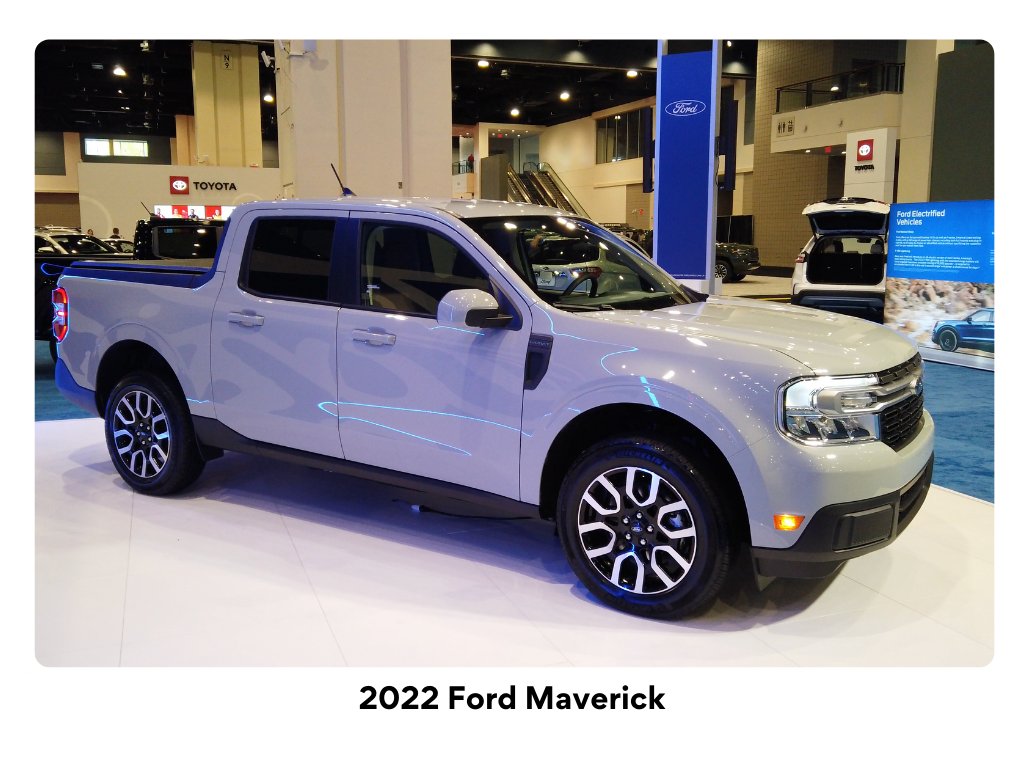
Drives and Handles Like a Car, Not a Truck
With a new generation of younger, first-time homeowners entering the market with plenty of DIY projects to tackle, many find that their compact, economy car doesn’t quite cut the grade anymore. They need more room, more utility, but don’t necessarily see themselves as “truck types.” You know, the big, full-size F150, RAM, or “Professional Grade” GMC Denali buyer. They need something smaller, but still capable of handling whatever chores come their way.
Enter the 2022 Ford Maverick, the first standard hybrid-powered small pickup truck in America. We recently saw the all-new Maverick at the 2021 N.C. International Auto Expo in Raleigh, shown above in what Ford calls, “Area-51” gray. The Maverick is based on the compact crossover Ford Escape and Ford Bronco Sport platform and features a 2.5L hybrid (gas-powered engine plus electric motor) that delivers up to 42 mpg (estimated)* in the city in standard FWD mode. For owners who wish to haul heavier payloads or do some trailering (up to 4,000 pounds), Ford offers a 2.0L gas engine that’s good for 250hp and 277 lb. ft. of torque. Add that power to the available intelligent all-wheel-drive system and trailer-tow package, and you can tow a small boat to the lake without breaking a sweat.
Possibly more important to these “new” small truck buyers, is the Maverick’s multi-function “Flex Bed” and multi-position tailgate, which allows you to configure the bed layout to accommodate a variety of tasks. From carrying a couple of mountain bikes to the trail, dividing up your tools and home improvement supplies, or loading in some furniture for the next big move, Maverick can handle all these jobs and more with relative ease. Best yet, this new smaller-sized pickup drives and handles like a car, not a truck, including when you need to park it on a city street.
But where did the idea of a “car-based pickup truck” come from? Keep reading.
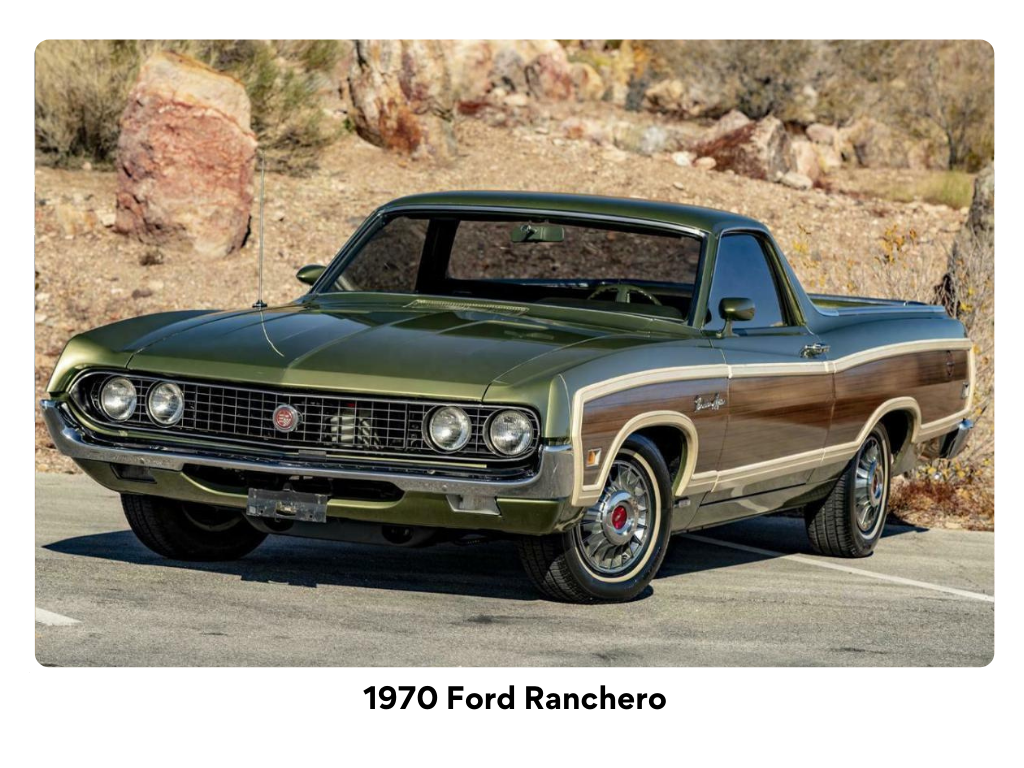
Smoking the Rear Tires at the Drop of a Clutch
Historically, Ford, General Motors, and RAM (Dodge) know a thing or two about building car-trucks and even small-scale pickups as we chronicled in a previous blog, It’s Back. Yesteryear’s Small, Car-Based Pickup Truck. Dating back to the late 1950s, Ford introduced Americans to the pleasure of owning a “city car” that could also double as a “utility vehicle” or small truck, in the country. The 1957 coupe-utility known as the Ford Ranchero was the trendsetter in a new atomic age of far-out, innovative designs and engineering.
These car-trucks were really full-size or midsize two-door sedans with a factory truck bed in place of a back seat and longer exterior roofline. Engine choices back in the day ranged anywhere from fuel-sipping inline-six cylinders all the way up the power scale to monster-sized big-block V8s. Mash the gas and you’d be smoking the rear tires at the drop of a clutch. The emerald green/simulated wood-paneled Ford Ranchero Squier was already several generations into production by the time the 1970 model (shown above) hit the streets. The last Ranchero rolled off the assembly line after the 1979 model year as the car-truck was replaced by the new light-duty pickup, Ford Ranger.
Stylish and Practical, El Camino
Not to be outdone by their crosstown rivals, General Motors introduced its own coupe-utility in 1959 and dubbed the new model (based on the full-size Chevrolet Biscayne), the “El Camino.” GMC’s version of the El Camino was originally dubbed “Sprint” from 1971 to 1977 and “Caballero” from 1978 to 1988. Stylish and practical, the El Camino was a slow seller at first, being retired after the 1960 model year, but was reintroduced on the more svelte midsize Chevelle platform in 1964 and stayed into production over several generations, culminating in 1987.
Like the Ranchero, the El Camino could be ordered with a variety of engines over the decades. The most notable being the LS6 454 CID engine, producing a whopping 450 hp and 500 lb-ft of torque, which gave the 1970 El Camino SS454 a 1/4-mile time in the upper 13-second range at around 106 mph!
The 1985 “Conquistador” trim found on the 1985 El Camino from the Raleigh Classic Car Auctions (above), represents the fifth and final generation of the General’s car-truck. It was a much more sedate, gentlemanly ride with its mildly tuned 5.7L V8 beneath the hood and skinny whitewall tires.
Super Sport Roadster
We couldn’t take a trip back to the days of tiny trucks without mentioning a couple of oddities from the category. First up, the unique convertible-roadster-trucklet mashup from Chevy, the “Super Sport Roadster” (above), which was produced in very limited numbers between 2004 and 2006. Why the limited production you may be asking? Well, the Chevrolet SSR was a bit polarizing with car enthusiasts and potential buyers at the time.
The SSR was designed with a retro-inspired front-end that recalled the “Advance Design” Chevy trucks of the late 1940s. Designers went wild on this one, by featuring oversized fenders extending out from each corner, a simulated “split windshield”, massive twenty-inch wheels in the rear, (nineteens upfront), two bucket seats, and a small, carpeted truck bed. Did we mention the SSR was also a convertible truck? Yep, with a power-retractable top that disappeared inside the carpeted bed, complete with a sleek, body-colored rear tonneau cover.
The Chevrolet SSR was a hot rod concept car that was given the green light for production. Unfortunately, buyers were a bit underwhelmed by the car-truck’s lack of performance considering its looks and price. Starting at around $42,000 (in 2004) and featuring a small block 5.3 L V8, The SSR took 7.7 seconds to reach 60 mph and hit the quarter-mile in just under 16 seconds. Chevy sold under 9,000 units in 2004 and quietly retired the one-off design after the 2006 model year.
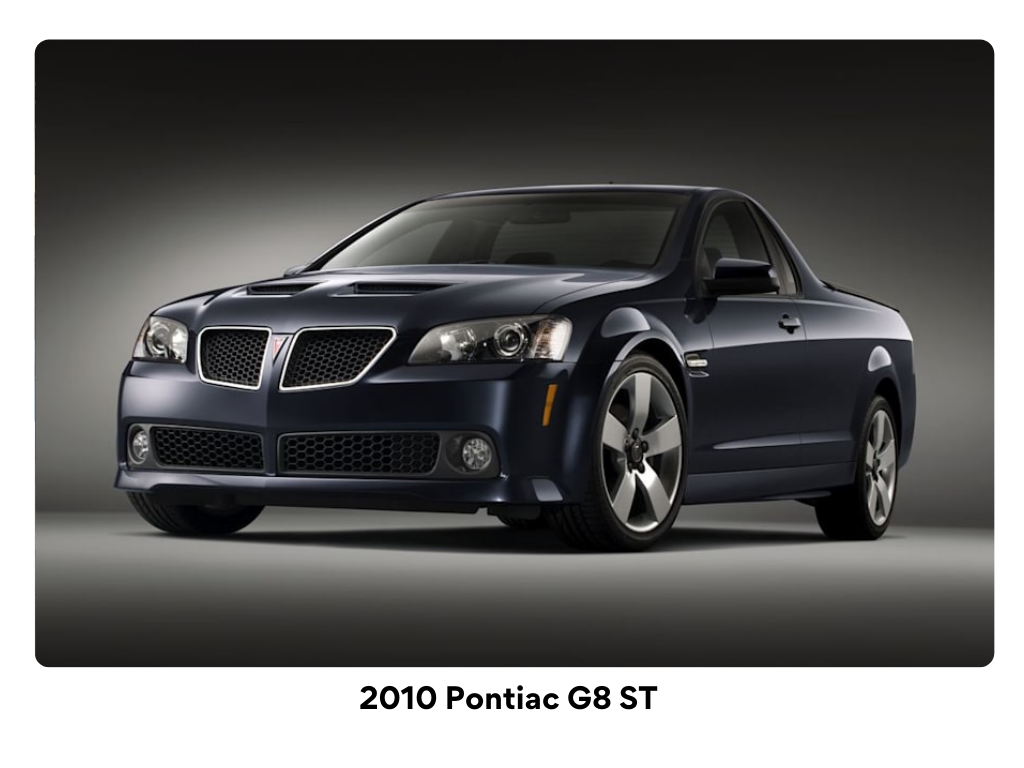
The Pontiac Camino?
Midway through the first decade of the 2000s, Pontiac Motor Division, (remember them?); was hitting its stride after a previous decade of producing their own version of rebadged, front-wheel-drive Chevys and Toyotas. By 2006, General Motor’s “Excitement” brand had brought the legendary G.T.O. back from the dead (via the rear-wheel-drive Holden Commodore from GM Australia), introduced a “Miata fighter” in the form of the Solstice 2-seat roadster, and around 2008, was selling the next generation Holden sedan (as the Pontiac G8) featuring a tire-smoking V8 under the louvered hood. What would be their next performance surprise? The “Pontiac Camino?”
Actually, GM wanted to bring another version of its Aussie sedan to the U.S. market in the form of the Holden UTE, but with the Pontiac G8 front-end. Their new creation would be called the Pontiac G8 ST with “ST” standing for “Sport Truck.” The new G8 ST debuted at the 2008 New York Auto Show and was slated for production the next year until the Great Recession hit and scuttled Pontiac’s plan. Then, General Motors deleted Pontiac from existence and the rest is history. The Pontiac G8 ST would have been a sweet car-truck with its 361 horsepower, a six-speed automatic, shared by the G8 GT sedan, but alas, it’s only a footnote in tiny truck history.
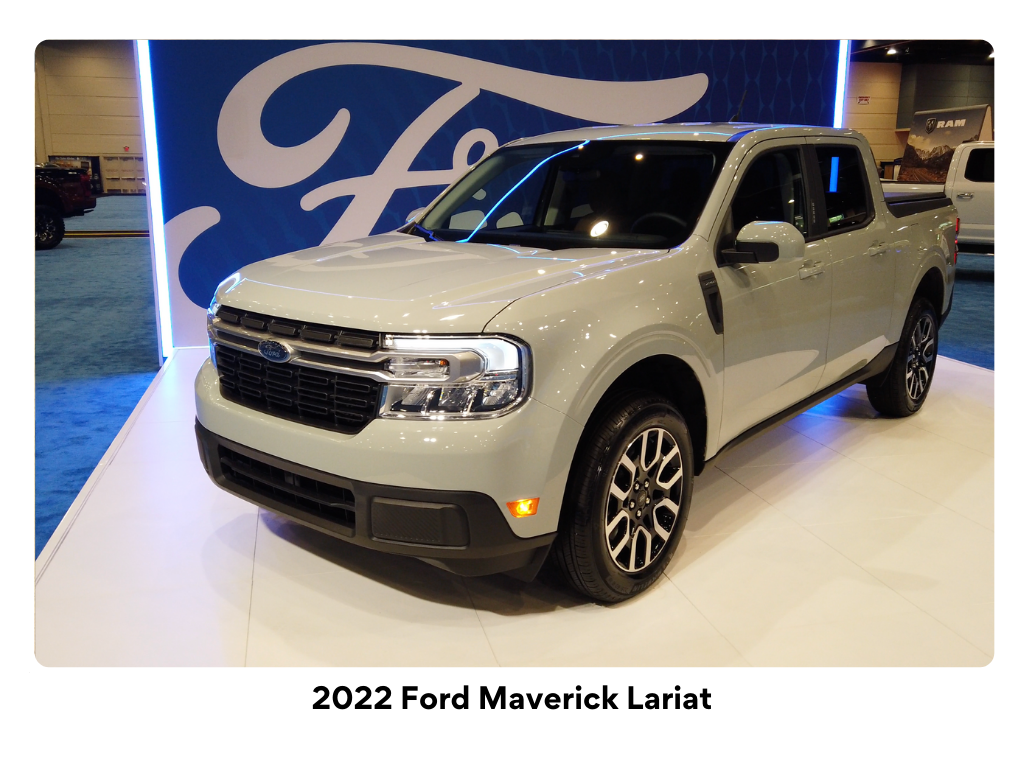
Inexpensive and Practical
Early sales indicators for the new Maverick, which starts at just under $20,000, show that Ford may be on to something as the blue oval brand sold a little over 4,000 Mavericks in October 2021, the truck’s first full month of production. Ford expects to sell between 50,000 to 60,000 Mavericks going forward. There are rumors that Toyota may be planning its own tiny truck to do battle with the new Maverick but GM is playing it cautious, for now, to see if there is truly a big enough market for another inexpensive and practical tiny truck.
Written by Mark Arsen for LeithCars.com.

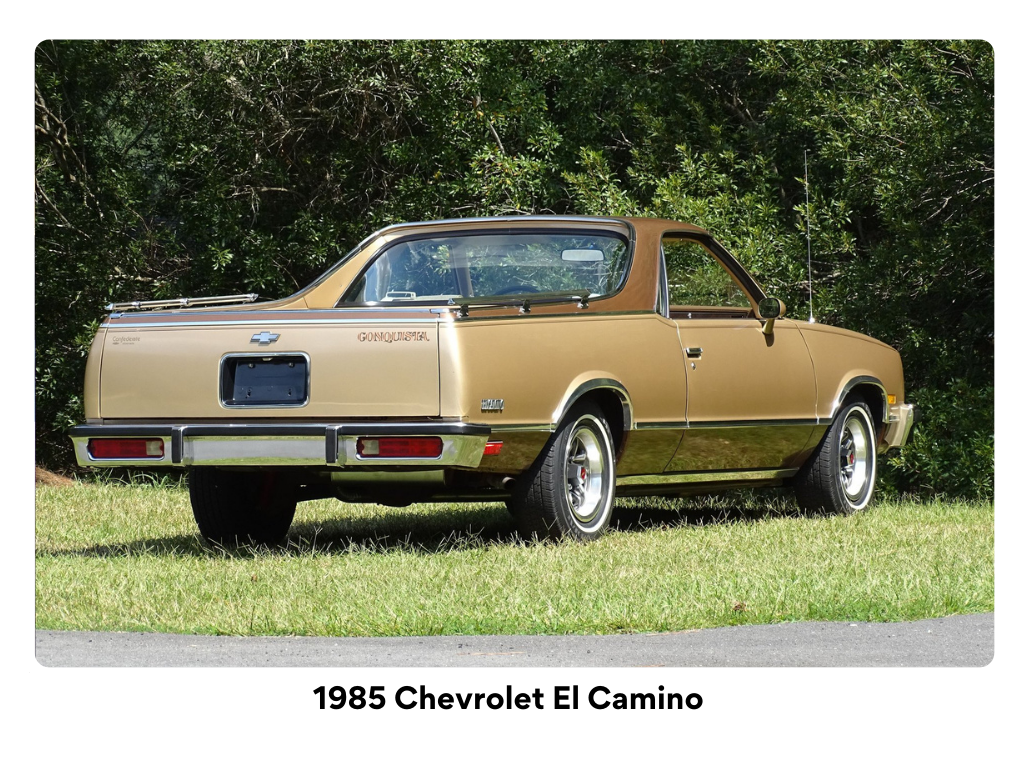
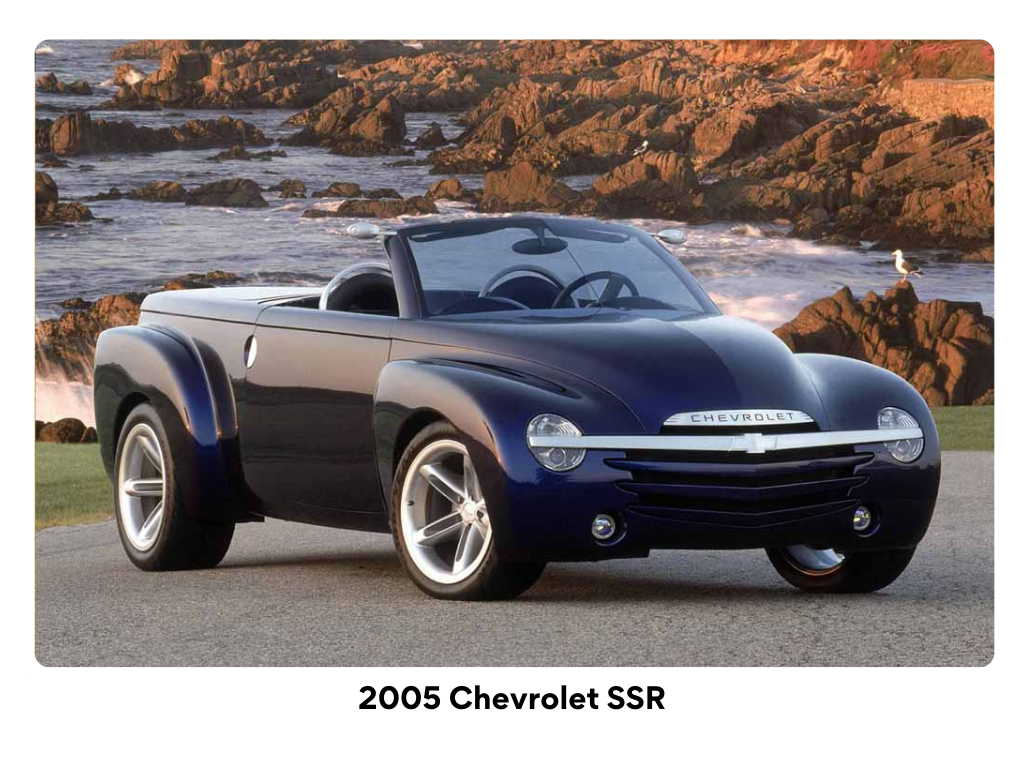
Leave a Reply